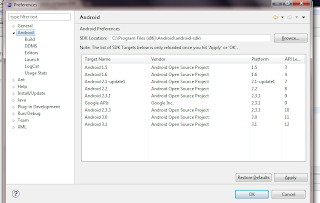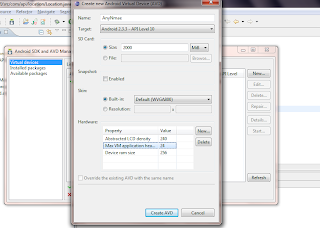TIBCO products are designed to help organizations pursue and benefit
from initiatives in three key areas: service-oriented architecture (SOA), business
process management (BPM), and business optimization.
SOA and Integration
TIBCO ActiveMatrix® Service Grid: is a distributed platform for assembling, deploying, and managing Java, .NET, and other services as composite applications. This unique approach to service virtualization enables organizations to reduce the complexity of heterogeneous SOA.
TIBCO ActiveMatrix® Registry: is a standards-based system of record for discovering, categorizing, and publishing services. As an integral part of TIBCO’s end-to-end service governance and virtualization platform, TIBCO ActiveMatrix Registry provides the foundation required to improve service reuse and promote services from development through to production.
TIBCO ActiveMatrix® Policy Manager: is a policy management solution that enables IT to define, distribute, and enforce rules for security, auditing, logging, service levels, and other application characteristics across a wide range of services built on Java and .NET, as well as custom and packaged applications.
TIBCO ActiveMatrix BusinessWorks™: is a standards-based service creation, orchestration, and integration product built to run natively with other ActiveMatrix products. It enables companies to expose existing systems as services, build new services, and orchestrate and assemble services into more flexible applications with little or no coding.
TIBCO ActiveMatrix® Service Performance Manager: is an enterprise software platform that monitors and proactively manages the health and performance of IT and business services based on service level agreements.
Enterprise Service Bus
TIBCO ActiveMatrix® Service Bus: is an enterprise service bus that enables IT to mediate services in a flexible and reliable manner in any heterogeneous environment.
Application Integration
TIBCO BusinessWorks™ SmartMapper software lets organizations assemble a more comprehensive and consistent view of their data by providing the cross-referencing and translation rules to harmonize semantically different data sets across multiple applications.
TIBCO Adapter™ software enables packaged applications, databases, and networking technologies to become active participants in the enterprise information flow. With a configuration-based approach to integration, TIBCO Adapters provide simple, automated mapping of incompatible technologies and data formats. TIBCO offers a broad set of adapters, including adapters for packaged applications, adapters for databases, adapters for technologies, and a full-featured TIBCO Adapter Software Development Kit (SDK).
B2B Integration
TIBCO BusinessConnect™ software lets organizations electronically interact and collaborate with trading partners by enabling the secure exchange of documents and automation of transactions across public and private networks. TIBCO BusinessConnect supports a variety of protocols including EDI, SOAP, RosettaNet, HIPAA, HL7, and UCCNet.
Mainframe Integration
TIBCO Mainframe Service Suite™ brings crucial, mainframe-based data and processes to SOA environments. The suite enables organizations to develop and deploy native mainframe services and events – without having to modify mainframe sources – for true end-to-end enterprise integration solutions.
Messaging
TIBCO Enterprise Message Service™ is standards-based messaging software that can serve as the backbone of an SOA by providing Java Message Service (JMS)-compliant communications across a wide range of platforms and application technologies.
TIBCO Rendezvous® software is the leading messaging product for real-time, broad data distribution. It has been used by thousands of customers for more than a decade and is the backbone for several of the largest mission-critical systems in production today. A common example of broad data distribution is the use of TIBCO Rendezvous for financial market data distribution systems.
TIBCO Messaging Appliance™ P-7500 provides a TIBCO Rendezvous backbone as pure hardware in a single box. By replacing the standard hardware, operating system, and messaging software with special purpose hardware, the TIBCO Messaging Appliance P-7500 delivers up to 10 times the message volumes and performance, one tenth the rack space and power consumption, and greater reliability – all with a lower cost of ownership.
TIBCO SmartSockets® software provides reliable real-time messaging using industry-standard protocols with exceptional performance, scalability, bandwidth efficiency, and fault tolerance. Using the rich TIBCO SmartSockets application programming interfaces (APIs) and class libraries, your organization can ensure that applications distribute and exchange information quickly, reliably, and securely across any platform and any network – LAN, WAN, internet, or satellite.
Business Process Management
TIBCO iProcess™ Suite is an open and standards-based BPM solution that extends from process design to process optimization. TIBCO iProcess™ Engine is the foundation of the suite and provides a powerful platform built to handle the most complex and demanding processes in any organization. It includes complete support for load balancing, multiple background processing, and real-time process monitoring to ensure highly available (24/7) system uptime.
TIBCO Business Studio™ software is the modeling and simulation environment for the iProcess Suite. It unifies key elements of BPM – modeling, management, simulation, and implementation – in one design environment. Different views of the same process model allow business and IT to collaborate seamlessly to create executable business process models.
TIBCO iProcess™ Analytics software is an OLAP-based analytics tool that gives business managers a timely and actionable view of process performance through highly configurable interactive dashboards.
TIBCO iProcess™ Decisions software enables business users to easily define, implement, analyze, and change rules without the aid of IT staff, providing an enterprise with the agility to respond to a constantly changing business environment.
TIBCO iProcess™ Conductor software extends the process management capabilities of the suite to address“goal-oriented BPM.” It packages TIBCO iProcess Engine processes as independent process components that are combined to create an execution plan. Process components can be reused, coordinated, individually monitored, dynamically modified – even completely remodeled – during runtime.
TIBCO iProcess™ Insight software provides business activity monitoring capabilities to BPM suite users. It gives business managers real-time process performance visualization and optimization information through operational dashboards.
Business Intelligence
• TIBCO Spotfire DXP™ Professional software enables business analysts and professionals to perform not only compelling ad hoc analyses, but also to rapidly capture, but also to rapidly capture, author, and share Guided Analytic applications that encapsulate analysis workflows and best practices.
TIBCO Spotfire DecisionSite® software allows engineers, researchers, and analysts to visualize, analyze, and explore attribute-rich data in real time.
TIBCO Spotfire® Analytics Server provides the enterprise with a centralized platform for the integration, deployment, and administration of next-generation business intelligence applications.
Complex Event Processing
TIBCO BusinessEvents™ software enables organizations to identify meaningful patterns among the countless events that occur across their business. By doing so, the software helps organizations recognize and proactively address problems and opportunities sooner than would otherwise be possible.
TIBCO BusinessFactor® software enables the creation of dashboards that let users observe, analyze, and act on operational metrics to fix problems and optimize performance.
Master Data Management
• TIBCO Collaborative Information Manager™ software enables organizations to align enterprise master data (product, customer, vendor, etc.) across multiple business units, departments, and partners and synchronize that information with downstream IT transactional systems.
User Experience
• TIBCO Ajax Message Service™ software provides a scalable and reliable way to deliver real-time information to web applications. With Ajax Message Service software, you can deliver low latency publish/subscribe solutions over HTTP in combination with web pages, Ajax applications, and other client technologies.
TIBCO General Interface™ software is an RIA framework that makes it faster and easier for organizations to build and deploy web-based applications and components that have the rich feel and functionality of desktop software.
TIBCO PortalBuilder® software is a robust, proven enterprise portal platform that enables organizations to effectively and efficiently deliver content and applications to different audiences via secure and fully customizable web-based interfaces.
Monitoring and Management
• TIBCO Hawk® software is distributed monitoring and management software that helps IT staff ensure and improve the performance and availability of the software that supports business processes.
TIBCO Enterprise Management Advisor™ software works with leading enterprise management platforms to help IT staff monitor and manage the performance of applications across their organization.
TIBCO® Enterprise RTView software enables TIBCO users to monitor and receive real-time feedback on the status of their networks without the costs of building and maintaining custom interfaces.

